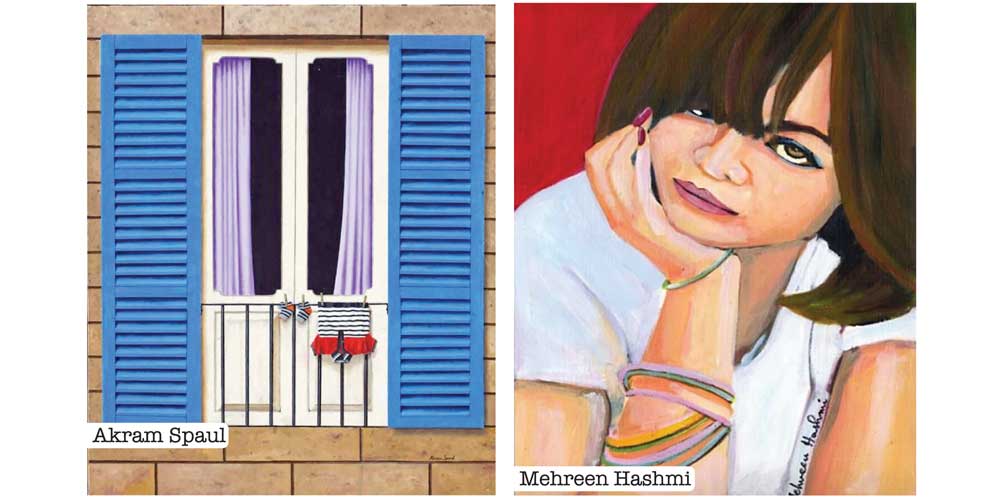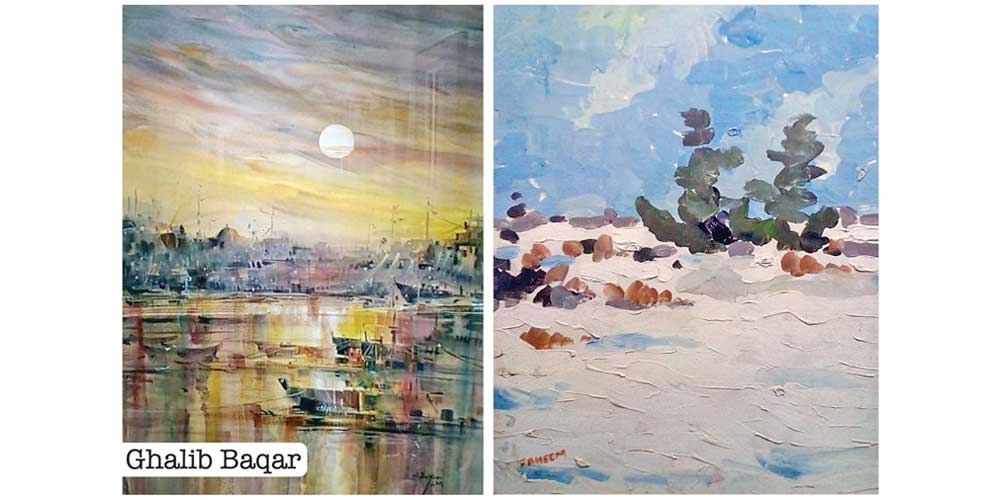ZULFIQAR ALI ZULFI’S HUES OF DUSK
- 29 Oct - 04 Nov, 2022
If you find yourself feeling less inspired or lacking perspective, talk to an artist. You may not share perspective, but it feels like “waking up” to think differently, a rather intense feeling, literature clumsily encapsulates as “thought-provoking.” Tafzeel, a tributary exhibition remembering senior artists of Pakistan brought together works from private collections at Art One62, a show curated by Mehreen Hashmi. The show featured artworks of the Laila Shahzada, Ahmad Zoay, Wahab Jaffer, Mashkoor Raza, Najmi Sura, Raja Changez Sultan, Tasadduq Sohail, Waseem Ahmed, Ghalib Baqar, Akram Spaul, Zulfiqar Ali Zulfi and Faheem Ahmed.

I take the opportunity to talk to, Hashmi, art curator, artist and vlogger about the voice of art and the local art scene. Hashmi has been an advocate for mental health awareness and uses arts and platforms like YouTube to express and educate as an abuse survivor. Painting has been with her since her days of Indus Valley, however, she began curating art since 2013 and has successfully curated exhibitions for Culture and Tourism department.
What does painting bring out in you?
My work has a lot of emotional interpretation. I realised I cannot do conventional painting and not spread the context behind it which is to create mental health awareness. I have a post card series which I give to people with mental health struggles who are domestic abuse survivors. My work is a protest and it serves a purpose.
How would you describe your curated show Tafzeel?
Tafzeel in Urdu means personal excellence. It has artworks from masters from a private collection. It covers different genres and different stages of artists. I couldn’t summarise it one word.
How does inspiration find you?
My own work is my emotional state which I interpret as an abuse survivor for a period of 20 years. I was painting with the focus of sharing my healing journey and people with similar history started writing to me. Their stories and my own are inspiration of my work.
How do you know when an artwork is finished?
I’m very emotionally connected to my work and it is catharsis for my own self. I don’t want to finish an artwork. It’s a very strange feeling, you enjoy the process of creating a piece that speaks for itself. If it was in my control, I would never want the process to end.
Have you ever created a piece which was difficult to part with? Tell us the story behind it.
There is one, it’s a portrait of me when I was having a nervous breakdown. It’s a reminder of what I have been through and I’ve come a very long way. It was a start of my “she series”, one of my known works. It has been exhibited in Europe. That gave me a lot of acknowledgement and I solved the puzzle of interpreting my emotional state.

Do you think there is rebellion in art?
Art is supposed to rebel. Artists are thinkers. My work, painting as well as curatorial, is deliberately thought-provoking because I prefer a reaction from my audience. We have to bring the change we seek in our society through art. Art and rebellion are directly proportional.
Do you think state resistance forces an artist into self-censorship?
When you are addressing political or social taboos, anything that can shake the society,there is always an establishment which is benefitting from that setup and resists change. Violence is an effective mode to push an artist into silence. So, you come speak up and they are scared of you. It’s vice versa.
Your first thoughts when you hear the words “censorship in art”?
For me censorship is when an establishment wants to silence the artists. And that’s a good response. It means that you are making something which can speak for itself. Art censorship exists globally. It varies from one visual culture to another. We have different limitations to exhibit in Pakistan and abroad.
Lastly, how do you think the art circle in Karachi could be expanded?
The circle in Karachi is expanding but very slowly. What we need is support from curators, gallerists and people who are capable of sharing their resources. We need fair chances and opportunities and we need an audience because it’s food for thought. We also lack museums but we have a lot of galleries and there’s a lot happening.
Art can be difficult to interpret and understand. How can an audience lacking the knowledge enjoy art when they don’t understand it?
A lot of people say we don’t understand art. We understand when we expose ourselves to it by visiting galleries, reading about it or talking to gallerists. I am there always when I have a visitor to explain artwork. There is a way when we want to learn something.
COMMENTS